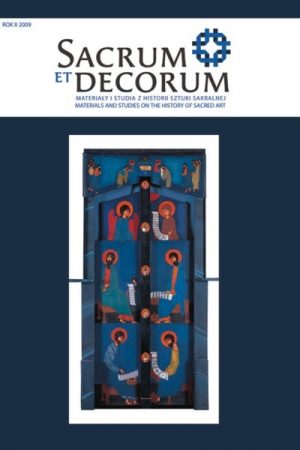Abstract art and sacred art
Keywords:
ABSTRACTION, KAZIMIERZ MALEWICZ, MAREK CHLANDA, RELIGIOUS ART, VIA CRUCIS, WAY OF THE CROSSAbstract
The purpose of the article is to discuss Via Crucis, a work by Marek Chlanda, which sets out to express one of the most important themes of Christian iconography in the language of abstract art. The author first asks whether the semantics of abstract forms can effectively convey the narrative and express the profound message of man's salvation by God. A positive answer is suggested by the manner in which Marek Chlanda alludes to the oeuvre of Kazimierz Malewicz, one of the founders of 20th-century abstract art, who was fascinated with communism. Thanks to Marek Chlanda, the legacy of the Russian artist can be recognized as an usurpation, an attempt to replace the Christian conception of the absolute by an impersonal authority, by which we are no longer morally obliged. This is particularly suggested by panel XV (Resurrection), in which a Malewicz-like black circle attempts to cover the crown of thorns. Far from being a mere allusion to the iconography of particular stations, Via Crucis also initiates a reflection on the role of religious experience in our modern time.Downloads
Downloads
Published
How to Cite
Issue
Section
License
Copyright (c) 2009 Sacrum et Decorum

This work is licensed under a Creative Commons Attribution-NonCommercial-NoDerivatives 4.0 International License.
In line with the Open Access policy, authors retain full copyright to their articles – without restrictions.
Authors can deposit their articles in a repository of their choice.


